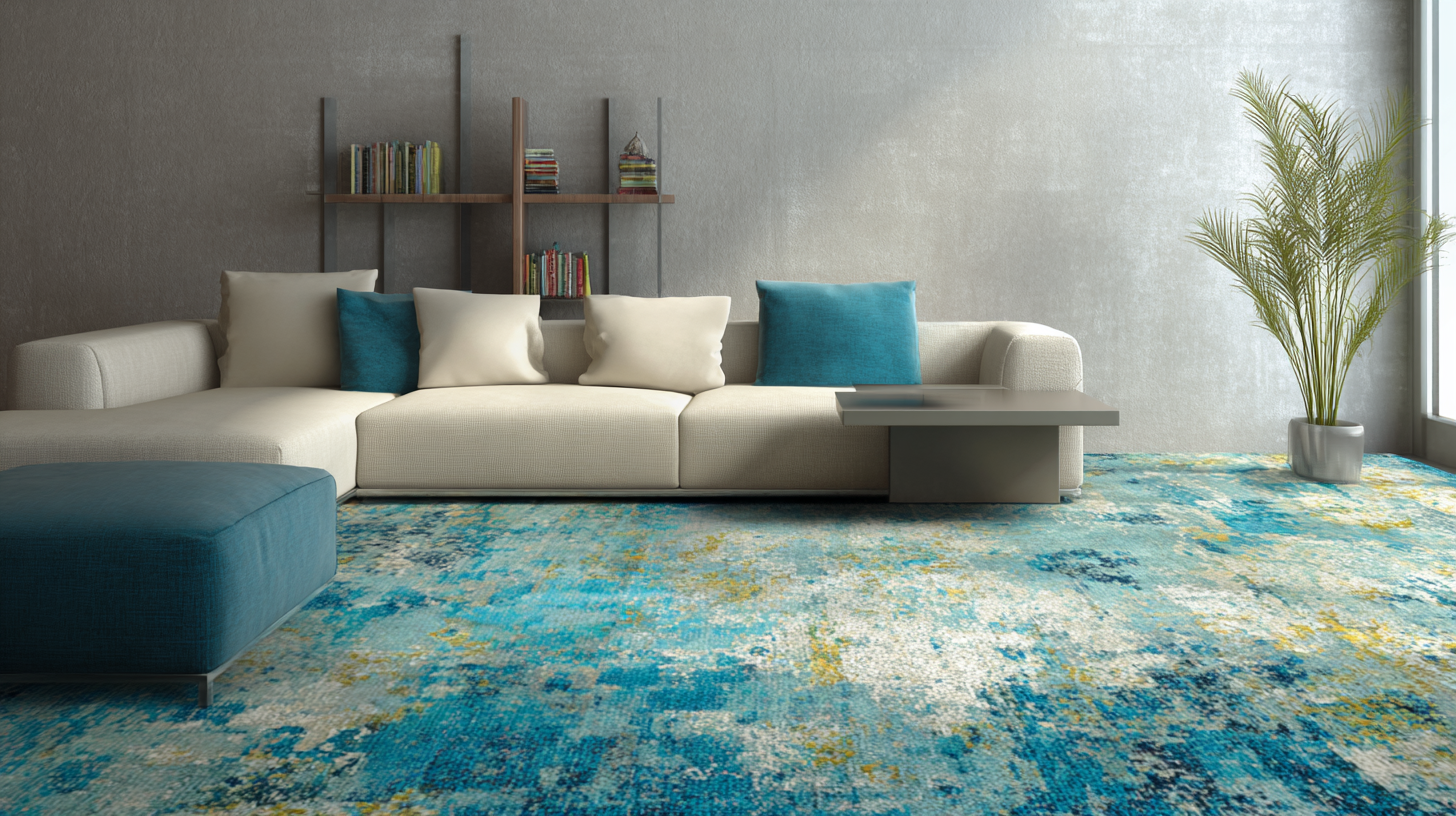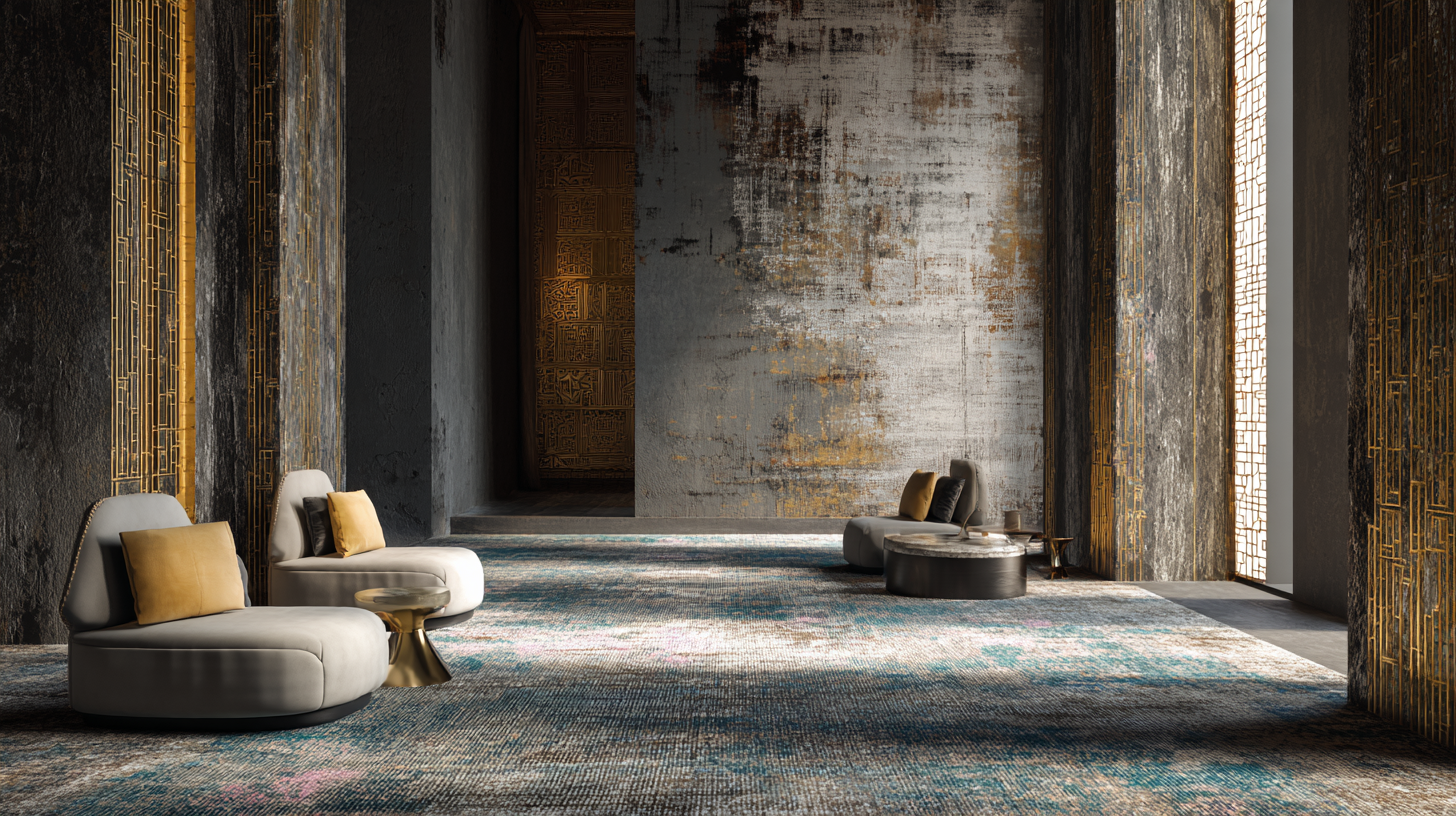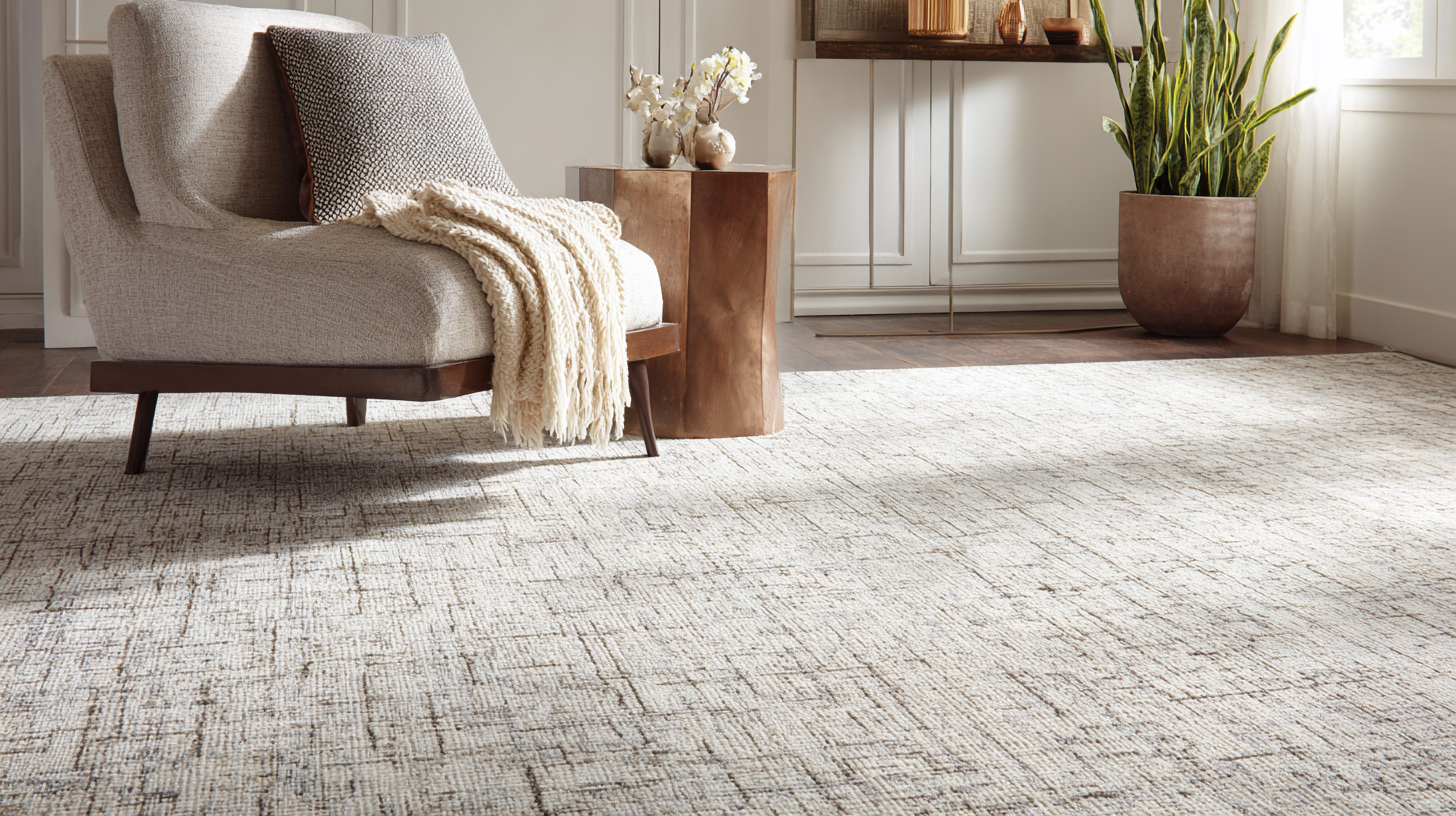As we venture into 2025, the home decor industry continues to evolve, spotlighting innovative solutions for essential elements such as the Bathroom Carpet. According to a report by Grand View Research, the global bathroom carpet market is projected to experience significant growth, driven by rising consumer awareness of home aesthetics and the increasing demand for bathroom renovations. Trends indicate that environmentally friendly materials and multifunctional designs are becoming central to consumer preferences, with surveys revealing that 68% of homeowners prioritize sustainability in their decor choices. This blog aims to explore the latest trends in bathroom carpet procurement, offering actionable insights on choosing the best materials and designs that not only enhance the visual appeal of your bathroom but also align with modern sustainability goals.

When it comes to bathroom aesthetics, the quality of the carpet is an essential element that often goes overlooked. High-quality bathroom carpets not only elevate the look of the space but also enhance comfort and durability. The manufacturing process of these carpets involves the selection of materials that can withstand moisture and foot traffic, ensuring longevity and safety. A well-constructed carpet can resist mold and mildew growth, which is critical in maintaining a healthy bathroom environment.
In 2025, we are likely to see an increasing emphasis on sustainable materials in bathroom carpet manufacturing. Consumers are becoming more aware of the environmental impact of their choices, leading to a demand for carpets made from recycled or eco-friendly fibers. Brands that focus on quality craftsmanship and sustainability will likely stand out in the competitive market, appealing to a growing demographic of eco-conscious buyers. In this trend-focused landscape, it is crucial for manufacturers to prioritize high standards while incorporating innovative solutions that reflect consumer values.
This chart illustrates the projected trends in bathroom carpet procurement based on material quality and consumer preferences for 2025.
When considering the procurement of bathroom carpets, selecting the right manufacturer is paramount. According to a recent report by Statista, the global home textiles market is projected to reach $132.24 billion by 2025, emphasizing the growing significance of quality and design in home decor. Bathroom carpets play a crucial role in enhancing both comfort and aesthetics, and choosing a manufacturer that emphasizes innovation and sustainability can make a significant difference.
Key factors to consider include the materials used in production. Green and eco-friendly options are increasingly requested, with a survey by the American Home Furnishings Alliance revealing that 65% of consumers are willing to pay more for sustainable products. Additionally, manufacturers that focus on water-resistant and mildew-resistant features are essential for bathroom environments, as wet conditions can lead to mold growth and odors. Evaluating a manufacturer's production processes, certifications (like Oeko-Tex), and customer feedback can further ensure that you're making an informed choice catering to both style and function.
| Factor | Description | Trend Rating (1-5) |
|---|---|---|
| Sustainability | Use of eco-friendly and recycled materials for carpets. | 5 |
| Design Innovation | Unique textures and patterns to enhance bathroom aesthetics. | 4 |
| Durability | Resistance to moisture and wear for longer life. | 5 |
| Comfort | Softness and comfort underfoot for a pleasant feel. | 4 |
| Price Range | Affordability while maintaining quality. | 3 |
| Customizability | Options for custom sizes and designs to fit specific needs. | 4 |
As we venture into 2025, the bathroom carpet industry is witnessing a significant evolution, driven by innovative materials that offer both aesthetics and functionality. A comparative analysis of material options reveals that sustainable textiles, such as bamboo and recycled PET (rPET), are gaining traction. According to a report by the Market Research Future, the global eco-friendly carpets market is expected to grow at a CAGR of 10.5% from 2020 to 2025, indicating a strong consumer preference for sustainable products. These materials not only contribute to a greener planet but also provide excellent moisture resistance and easy maintenance—essential features for a bathroom environment.

In addition to sustainability, technological advancements have led to the development of products designed specifically for high-traffic, moisture-prone areas. For instance, nylon and polypropylene carpets, known for their durability, are increasingly being treated with advanced stain-resistant coatings. The American Carpet Manufacturers Association reports that carpets made from these materials can last up to 25% longer than traditional options when subjected to typical bathroom conditions. As homeowners prioritize longevity and performance in their purchases, these innovative material solutions are set to redefine bathroom decor in the years to come.
As we move towards 2025, the trends in sustainable manufacturing practices for bathroom carpets are becoming increasingly evident. With the global sustainable personal care products market projected to grow significantly, there is a rising demand for eco-friendly materials and methods in the home decor sector. This growth is not just a passing trend; it reflects a fundamental shift in consumer preferences towards greener alternatives. Manufacturers are now incorporating sustainable materials and practices into their processes, ensuring that their products not only meet consumer needs but also adhere to environmental standards.
Recent developments in green chemistry highlight the effectiveness of innovative solutions for enhancing sustainability in industrial processes. By adopting these practices, producers of bathroom carpets can significantly reduce their environmental impact. This includes utilizing recycled materials, implementing energy-efficient production methods, and exploring biodegradable options. These advancements are paving the way for a more sustainable future in decor, demonstrating that style and responsibility can coexist harmoniously in our homes. The focus in 2025 will be on aligning aesthetic appeal with eco-conscious choices, ensuring that consumers can feel good about their purchases.
As we delve into the trends shaping bathroom decor in 2025, it is vital to consider current market insights that highlight consumer preferences and budgeting strategies for procured carpets. The rising awareness of sustainable materials and innovative designs is influencing buying decisions. For example, reports indicate that the global flooring market is projected to grow significantly, from $32.25 billion in 2024 to $67.02 billion by 2035, suggesting an increasing demand for decor items that are both functional and eco-friendly.

In the smart home era, consumers are showing a preference for bathroom carpets that not only enhance aesthetics but also integrate seamlessly with modern technology. Features such as water resistance, antimicrobial properties, and easy maintenance are becoming key determinants in the purchasing process. Moreover, as households continue to tighten budgets while seeking high-value products, promotional strategies that emphasize durability and design innovation will be crucial for manufacturers aiming to capture consumer interest in this competitive market. These trends reflect a broader shift in the home decor industry, where consumer psychology is increasingly driving product offerings and marketing strategies.
